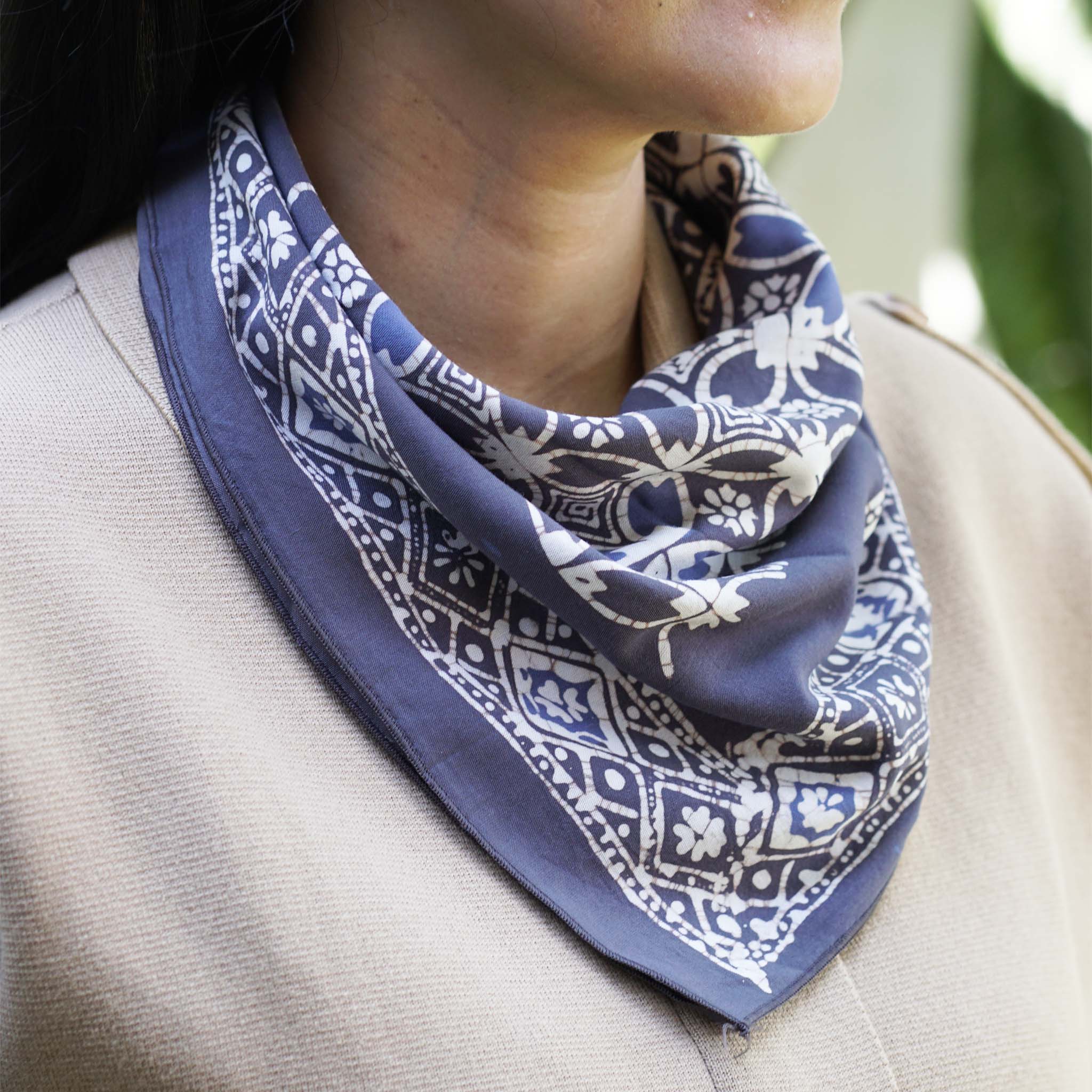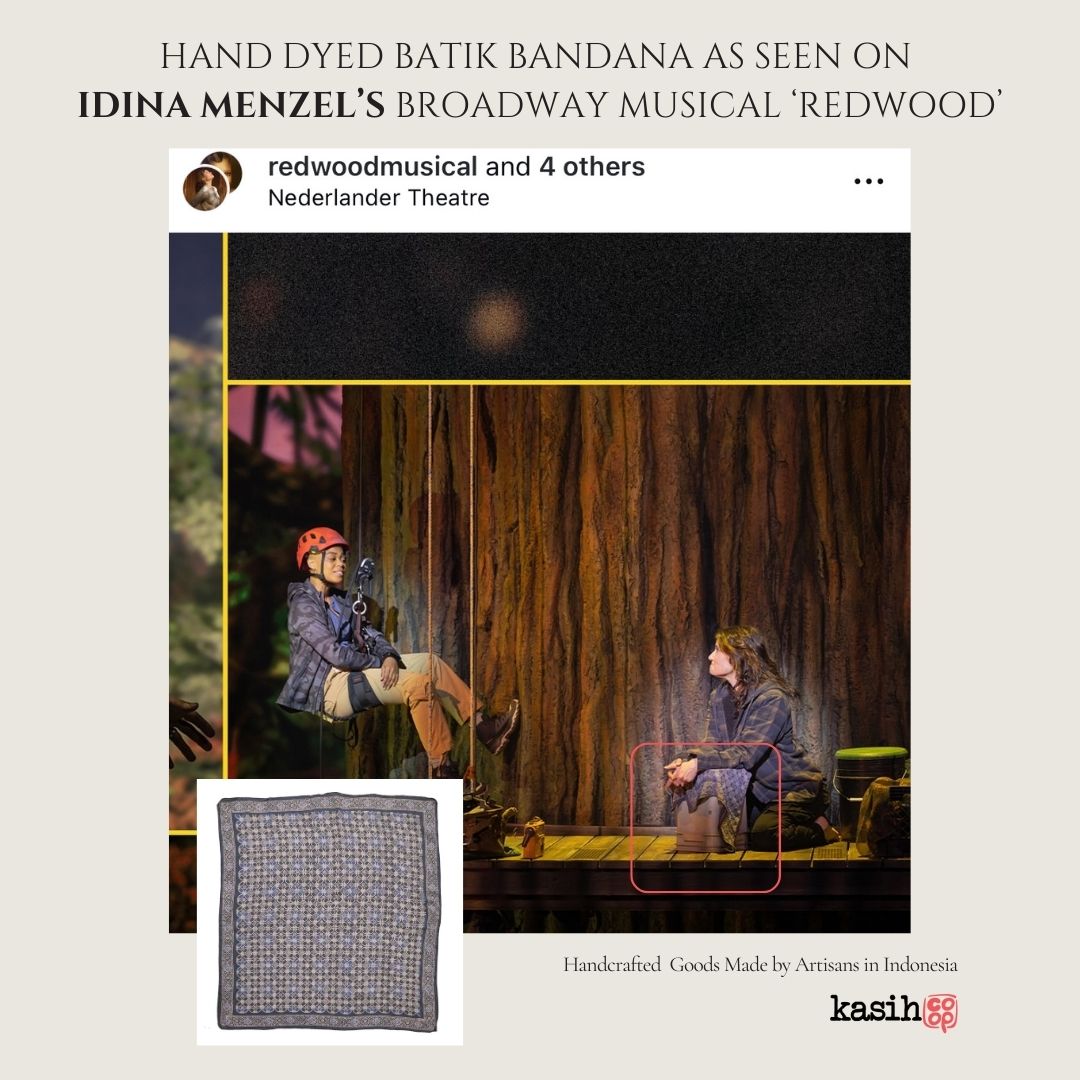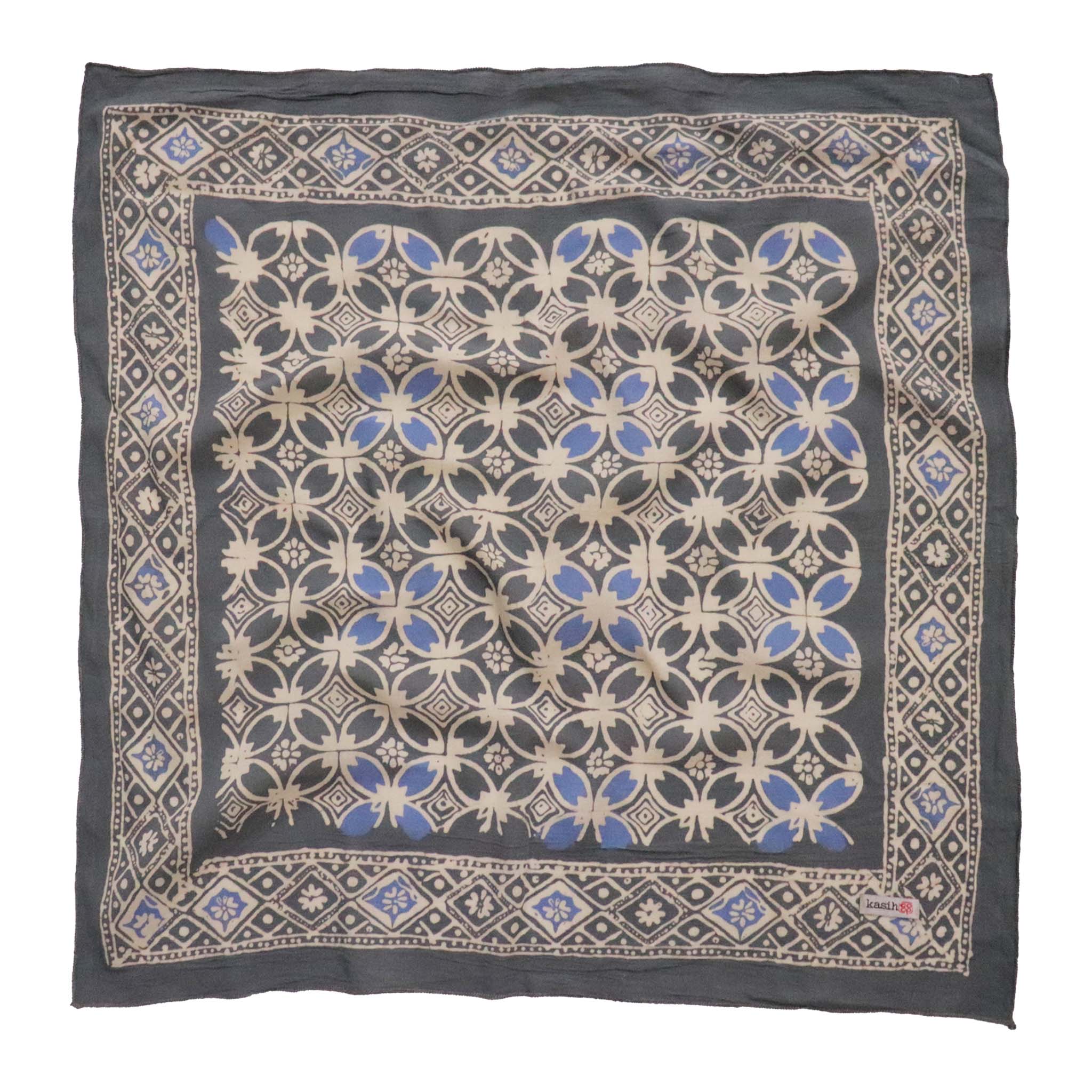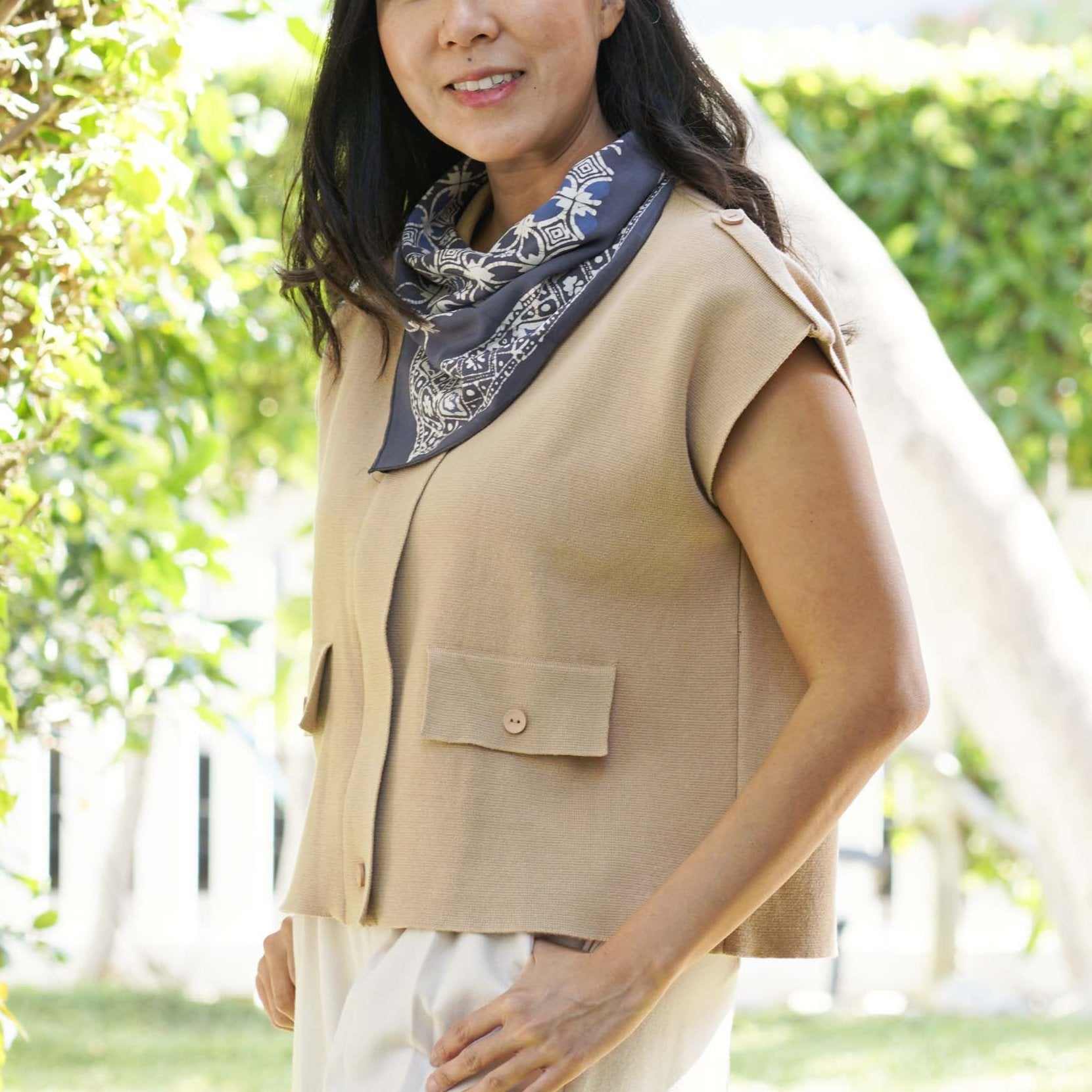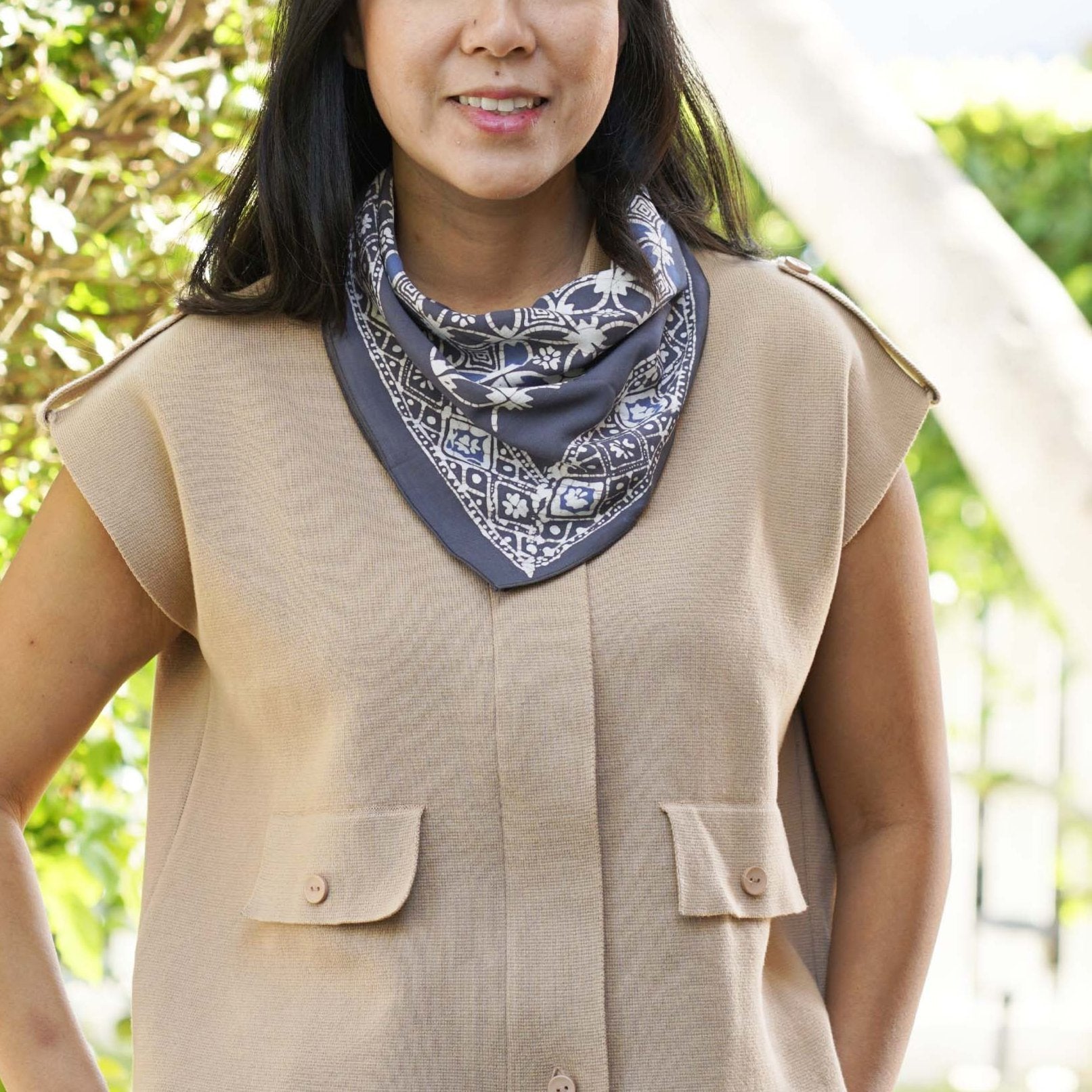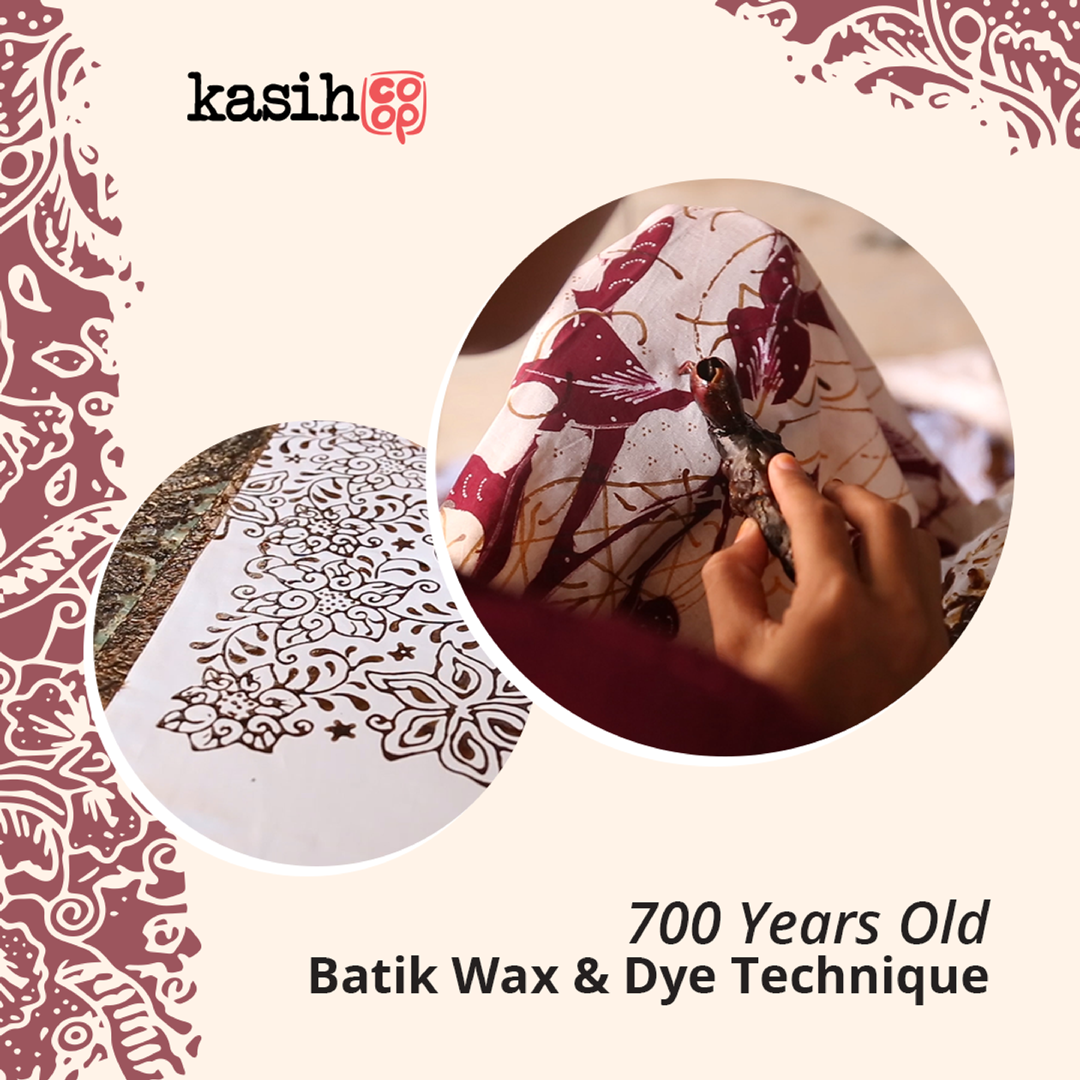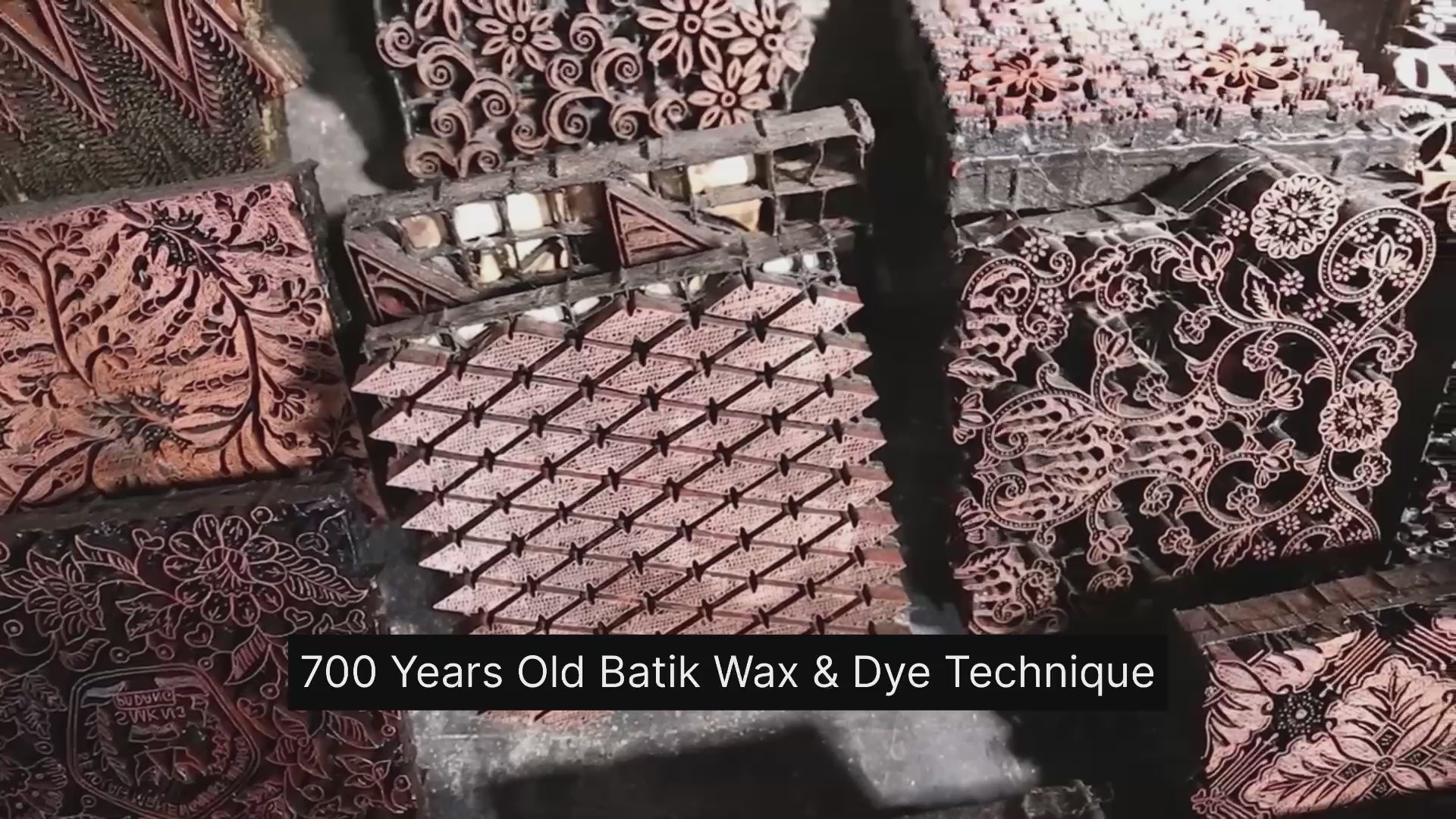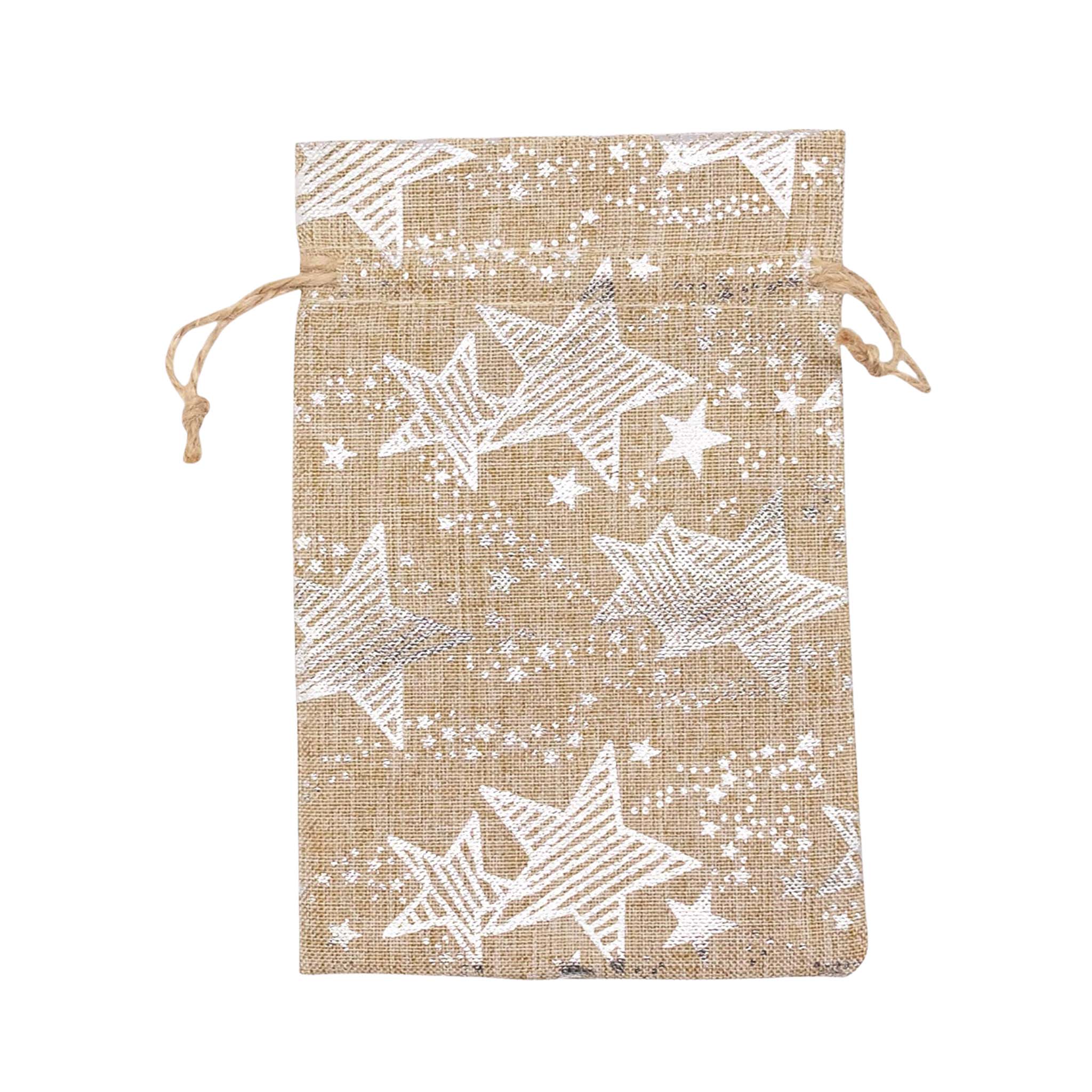Batik Bandana - Soft Lightweight Cotton, Charcoal Gray, Hand Dyed
Couldn't load pickup availability
Elevate your style with our exclusive Artisan-Made Batik Bandana in the Charcoal Grey Kawung pattern, a stunning accessory hand-crafted by skilled Indonesian artisans using a revered 700-year-old traditional batik technique. This piece of wearable art is so unique and authentic that it was chosen as a prop for Idina Menzel’s Broadway musical, Redwood, in New York.
- Authentic Indonesian Craftsmanship: Each bandana is hand-stamped and hand-dyed using traditional batik wax and dye, followed by a sun-baking process, ensuring no two pieces are exactly alike.
- Premium Material: Made with 100% soft, lightweight cotton fabric for ultimate comfort and easy styling as a hair tie, neck scarf, wrist wrap, or charming pet dog bandana.
- Signature Kawung Pattern: kawung is one of the oldest and most respected classical Javanese motifs, traditionally originating from the royal courts in Java & inspired by the cross-section of the Kawung fruit or the seeds of the sugar palm or areca palm tree.
- Unique Shape & Size: Approximately 19.3”x20”. Expect minor variations in color and a non-perfect square shape—this natural shrinkage is a mark of the traditional hot-wax and pre-washing process, confirming its handmade authenticity.
- Easy Care: Machine washable in cold water and air dry. For best results, wash your batik dye cotton accessory separately.
- Discover the fascinating process behind this art! See our video of the traditional batik making process on the product page.
Kasih Co-op shares the culture and craft of Indonesia's batik
Handcrafted 700 years old batik wax & resist technique
FAQ for Batik Scarves & Bandanas
What makes this a genuine Indonesian Batik, and how can I tell it’s not a mass-produced printed design?
Authentic Indonesian Batik is defined by the traditional wax-resist dye technique, a craft recognized by UNESCO. Our products are created using either Hand-Drawn (Batik Tulis) or Hand-Stamped (Batik Cap) methods.
The easiest way to confirm authenticity is by performing the "Double-Sided Check": Genuine batik colors and patterns are almost identical and equally vibrant on both the front and the back of the fabric, because the wax and dye fully penetrate the cloth. Printed imitations will show a bright front but a noticeably faded or indistinct back.
Why is Indonesian Batik considered a unique cultural heritage?
Indonesian Batik is far more than just fabric; it is a living tradition. In 2009, UNESCO recognized Indonesian Batik as a Masterpiece of the Oral and Intangible Heritage of Humanity.
The craft is deeply intertwined with the Indonesian cultural identity, spirituality, and visual storytelling, with techniques and symbolic meanings passed down through generations. Specific Javanese motifs, for instance, were historically reserved for royalty, adding layers of meaning to every thread.
What is the meaning behind the most popular Batik motifs like Parang, Kawung, or Mega Mendung?
Batik motifs function as a visual language, carrying deep philosophical meanings :
- Parang: This diagonal, wave-like pattern, originating in Central Java’s royal courts, symbolizes strength, continuity, and resilience.
- Kawung: One of the oldest motifs, based on intersecting circles (resembling the palm fruit), it symbolizes purity, justice, and is a reminder to never forget one's origins.
- Mega Mendung: This cloud pattern from Cirebon represents patience, calmness, and the expectation for the wearer to remain controlled and cool in handling problems.
How should I wash my Batik to ensure the colors do not fade and the fabric lasts?
Proper care ensures the longevity of your handcrafted item. Gentle is key :
- Washing: We strongly recommend hand washing in cold water. If you use a machine, select the delicate/gentle cycle and place the batik in a mesh bag.
- Detergent: Use a mild detergent. Never use chlorine bleach or strong detergents.
- Drying: Air-dry in the shade. Prolonged exposure to direct sunlight must be avoided as it causes color fading. Do not wring or twist the fabric.

